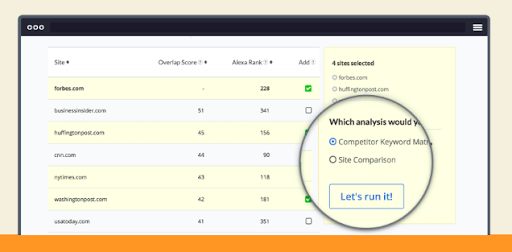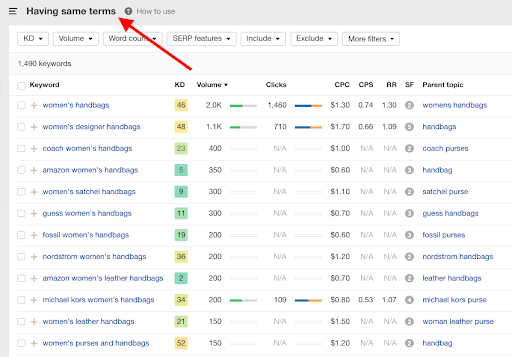
5 Step Process To Create A PPC Strategy That Converts
Search advertising and search engine marketing go hand-in-hand when it comes to increasing site traffic, boosting brand awareness, and driving more conversions (sales).
This makes having a Pay-Per-Click (PPC) strategy critical to the overall growth and success of your business.
Did you know that businesses net around two dollars for every dollar spent on paid advertising via Google Ads? That’s not bad ROI when it is all said and done. This is also the average ad spend ROI according to Google. Many businesses get much more on their online ad investment.
However, your business’ PPC strategy needs to encompass core principles to maximize campaign success. These core principles include planning, execution, and optimization. If you skip a few steps along the way, you may end up wasting cash on paid advertising.
Process To Create A PPC Strategy That Converts in 2022
Protect your marketing budget by creating a PPC strategy that converts at the highest level. With SEO and SEM at the forefront, I’ve detailed what it takes to maximize ad spend in the following five-step process. Let’s get to it!
Step 1: Identify Goals With Budget In Mind
This is the first step to creating a PPC strategy that converts and is the cornerstone of planning. In order to not waste valuable ad spend, goals need to be clearly identified with a budget in mind.
Approaching PPC advertising planning is very similar to top marketing strategies you use to build brand awareness, drive traffic to your site, and convert site visitors to paying customers. Defining PPC goals, however, can be slightly different in some cases.
The first part of this is to ensure your PPC goals align with your current marketing goals. For example, if driving traffic to your website is the Q4 goal for 2020, the pay-per-click goal should be the same.
Your second focus should be that your paid ad marketing efforts do not interfere with your current SEO efforts. Chances are you already get a fair share of organic traffic from certain keywords. If these keywords are already doing the job, keep them off your PPC keyword list.
If you look at Nike’s organic keywords, you will see that they already own position one on Google SERPs for “jordans.”

This tells their PPC strategists that they don’t need to waste the online advertising budget on that keyword, since they already rank for it organically.
To identify goals with budget in mind, you definitely need to define Key Performance Indicators (KPIs). These can help guide your PPC strategy for maximum conversions. For example, if you want to increase leads in Q4, KPIs could be the number of conversions that are sales qualified netted from a paid online ad.
Having specific PPC goals, as well as goals that align with your overall marketing and SEO strategy is essential. This step cannot be skipped.
Step 2: Do Competitor Paid Ad Research
Researching competitors before launching an ad campaign is a must-do when it comes to creating a PPC strategy that converts. You need to know who your main paid search competitors are, as well as understanding what makes them successful. Competitor ad research also highlights how much work will be needed to be competitive.
How do you do competitor paid ad research? There are a few different ways. If you already have the keywords you want to focus on for your PPC campaign, you can research competitors using Google search.
Let’s say you developed a training watch and want to run ads. You will most likely have the keyword “training watches” in your paid ad keyword group. To do competitor paid ad research, simply Google search “training watches.”

Two paid ads come up. These will be your top competitors for this keyword phrase. Garmin is a well-known brand and will take very aggressive ad play on your part. But you may not need to be as aggressive to beat out the brand Whoop.
There are also online tools you can use to do competitor paid ad research. You can use the Audience Overlap tool from Alexa.

This is an easier and faster way to identify and evaluate all competitors for your upcoming PPC campaigns. However, these types of tools are often expensive.
Step 3: Build Out PPC Keywords
Keywords are the ammunition you have to create a PPC strategy that converts. Targeting the right keywords in your paid advertising campaign will get your business the maximum ROI possible. Use the wrong keywords and ad spend will be wasted.
The focus here is user-centric keyword research. With your competitor research done, you should have a decent list of keywords to draw upon. But don’t stop there. Begin your keyword research with very broad keyword terms.
Let’s say you have a women’s fashion line and you want to create paid ads on women’s handbags. Use Google Keyword Planner, or another keyword search tool to begin building out this broad term.

This keyword term is hard to rank for and has a relatively high CPC. The next step is to look for “same terms” keywords.

You can see that there are quite a few “same terms” keywords you can use for a paid ad campaign with less difficulty and less CPC.
Once you have a few keywords picked out and added to your keyword group, you can check off planning and begin putting your PPC strategy into action.
Step 4: Build The Ad Account Structure
To build the ad account structure for your PPC strategy, you will need to define the ad campaigns and associated ad groups. This means that you need to set the budget for campaigns and keywords for ad groups. It will look like this:
- Ad Campaign (A) = 2-3 Ad Groups = 2-3 Text Ads
- Ad Campaign (B) = 2-3 Ad Groups = 2-3 Text Ads
- Ad Campaign (C) = 2-3 Ad Groups = 2-3 Text Ads
Set up the campaigns by looking at the keyword terms you compiled during the keyword research step. Then define the action you want people to take when they click-through from the ad.
For example, if you have an ad campaign encompassing men’s shoes, the ad groups will define the type of men’s shoes with the action in mind. It could look like this:
- Ad Campaign (men’s shoes) = Ad Groups (men’s running shoes, Nike running shoes, men’s trail running shoes, etc.) = Action (click through to men’s running shoes for purchase on your site)
Once you have the ad campaigns defined by multiple ad groups and the actions you want potential customers to take once they click-through, you can begin creating your text ads.
Step 5: Creating High CTR Ad Content
With ad groups defined, you can develop text ads. This is one of the most important steps in the process to creating a PPC strategy that converts. Ad content needs to be effective in increasing click-through rates (CTR) while reducing cost per acquisition.
You can hit a home run on keywords, ensuring your ads appear when users Google search for specific keywords. But if you fail to get them to click-through due to poor ad content, ad spend is sadly wasted.
Here’s how to get high CTR from your ad content:
- Use the target keyword in both the ad headline and the ad body description
- Create content that moves users toward action, like “get your deal” or “sign up”
- Highlight benefits to users first before asking users to take action
- Ensure the display URL is clear, concise, and user friendly
- Listing price can be effective if the price point is lower than competitors
- Look at competitor ad content to better your own for maximum CTR over competitor ads
Another way to maximize CTR with ad content is to employ ad extensions. Ad extensions are a Google feature that can help your paid advertisement stand out. This is an especially important feature to use in highly competitive industries with plenty of competitor ads to contend against.
Ad extensions look like this:
Your PPC strategy and the ability to execute effective, highly converting ad campaigns is tethered to the ad content you create. Take your time and do your homework when it comes to this step.
Are You Ready To Create A PPC Strategy That Converts?
The above 5 step process to PPC strategy success will certainly get you moving in the right direction. It’s important not to skip any step in the process, and be sure to take your time.
A rushed PPC strategy will more often than not result in failed campaigns. Get the most out of each paid ad and achieve the next level of success for your business. You can also check the best PPC marketing companies for startups directory if you’re looking for one.






















